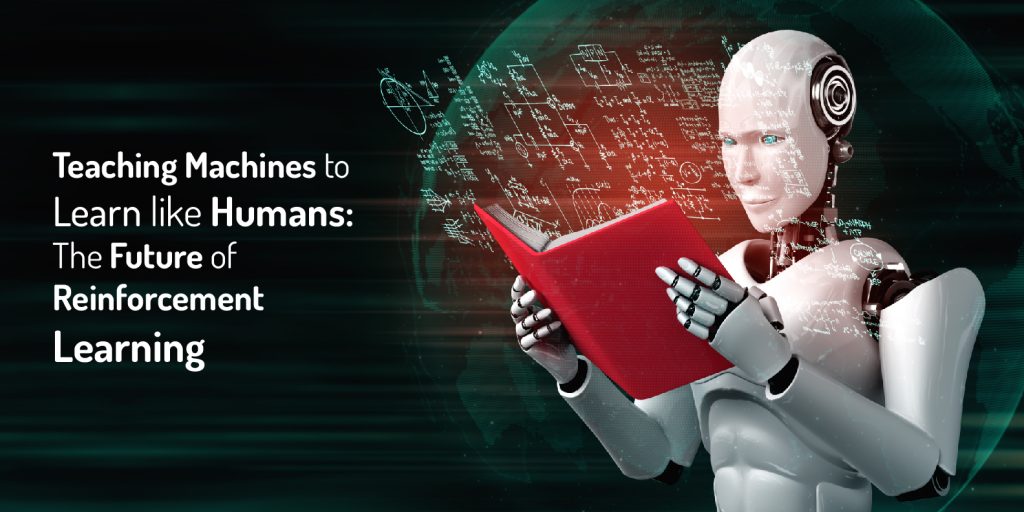Reinforcement “Learning:” Teaching Machines to Learn Like Humans
Introduction:
Reinforcement learning is machine learning that aims to teach how to learn and make decisions through trial and error, much like humans. Inspired by the way humans learn from their experiences, reinforcement learning utilizes a reward-based system to train intelligent agents. We will delve into the concept of reinforcement learning, its applications, and how it mimics the learning process of humans.
1. Understanding Reinforcement Learning:
Reinforcement learning involves training an agent to make sequential decisions in an environment to maximize cumulative rewards. By interacting with the environment, receiving in the form of rewards on its actions. Through continuous exploration and exploitation, the agent learns optimal strategies to achieve its goals.
2. The Role of Rewards and Punishments:
Rewards play a vital role in reinforcement learning. Positive rewards reinforce desired actions, encouraging the agent to repeat them, while penalties discourage undesirable actions. By associating actions with rewards, the agent learns to make decisions that lead to favourable outcomes and avoid those that result in negative consequences.
3. Trial and Error Learning:
Reinforcement learning involves an iterative process of trial and error. The agent explores different actions, observes the outcomes, and adjusts its behaviour based on the rewards received. Over time, the agent learns from the consequences of its actions, refining its decision-making abilities and optimizing its strategies.
4. Applications of Reinforcement Learning:
Reinforcement learning has found applications in various domains, including robotics, gaming, finance, and healthcare. In robotics, agents can learn to perform complex tasks by interacting with their environment. In gaming, reinforcement learning has been instrumental in developing AI opponents that can adapt and improve their gameplay. In finance, it can be used for algorithmic trading and portfolio management. In healthcare, reinforcement learning can aid in optimizing treatment plans and personalized medicine.
5. Challenges and Future Directions:
While reinforcement learning has shown great promise, it also comes with challenges. The exploration-exploitation dilemma, sparse rewards, and scalability are among the key hurdles that researchers and practitioners face. However, advancements in algorithms, computational power, and data availability are continuously pushing the boundaries of reinforcement learning.
Conclusion:
Reinforcement learning allows machines to learn and make decisions in a manner similar to human learning. By utilizing rewards, trial and error, and optimization techniques, machines can adapt and improve their performance over time. As we continue to explore and refine reinforcement learning algorithms, we can expect to see further advancements in areas such as robotics, gaming, finance, and healthcare, ultimately bringing us closer to machines that can learn and make decisions as humans do.



